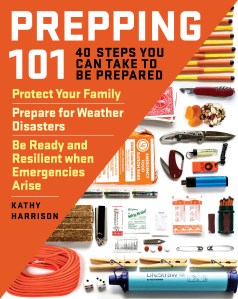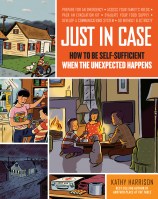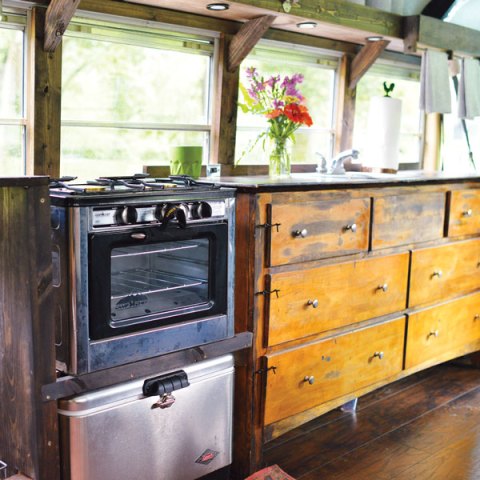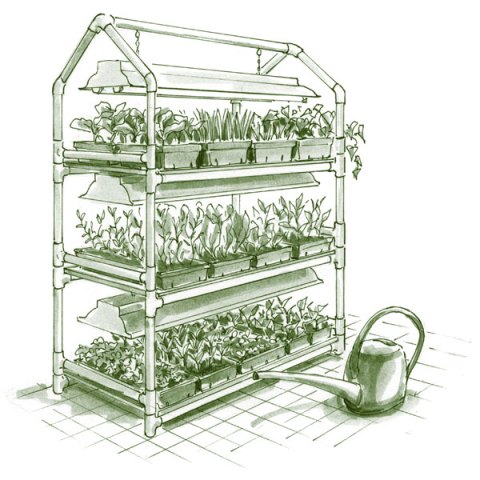How to Keep Warm When the Power Goes Out
When winter storms threaten, be prepared to handle a power outage even without a wood stove with these tips from Kathy Harrison’s Prepping 101.
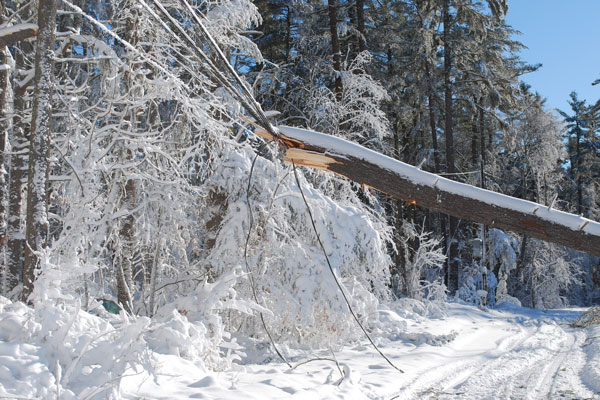
If you’re very lucky, when the power goes out during cold weather you simply stoke up the woodstove and remain nice and toasty. If you are not so lucky, the power goes out and you feel your house get steadily colder. It’s a terrible feeling, especially if you have children or elders who need to be kept warm. Here are some ways to minimize heat loss and maximize warmth.
Stop Heat Loss from the House
ACT QUICKLY. Your first step is to keep as much valuable heat inside as you can. Immediately stop opening exterior doors. Every time you do, warm air rushes out and cold air tumbles in.
BLOCK AIR FROM LEAKING BETWEEN ROOMS. Close all interior doors, and at the base of each place draft blockers such as rolled-up towels, folded newspapers, or throw pillows. If you have extra blankets, hang them in front of doors or lay them on the floor.
INSULATE WINDOWS. Even the best windows leak. Add a layer of insulation directly onto the glass. Cut a piece of bubble wrap and stick it right on your windows, covering the frames if possible. Wiping the windows with a damp sponge will help the bubble wrap cling. In the absence of bubble wrap, you can stretch plastic wrap or hang heavy blankets over the windows.
Heat the Smallest Space
Begin with your body and work outward from there. Keep pulse points covered to stay warm. Dress in layers. Loose layers trap more air and will keep you warmer than tight clothing. Long underwear topped by a flannel or chamois shirt and a vest keep your core warm but still allow for ease of movement.
Speaking of long underwear, cotton isn’t the best choice. If it gets wet from sweat, you wind up chilled. Look for material that wicks moisture and stays dry. Thermal underwear designed for skiing and other cold-weather activity is lightweight and comfortable. Zip small children into fleece footed pajamas over their long underwear and socks; add a vest to keep their core warm.
Your extremities are at risk from cold temperatures, so wear gloves, wool socks, and a hat, even while sleeping. Chemical handwarmers are inexpensive and can be helpful. Sporting goods stores offer the highest quality cold-weather gear — shop the end-of-season sales for bargains.
If you can’t keep a single room warm, check out your basement. Areas belowground tend to maintain a steady temperature. While a 45˚F (7˚C) basement might feel cold when you enter it from a 70˚F (21˚C) house, it will feel balmy if the temperature in your house has fallen to 20˚F (–7˚C).
Sleep Warm
Flannel sheets, wool blankets, and down comforters will get you through most cold nights, but if you live in a place with extremely low nighttime temperatures, you may want to invest in good four-season sleeping bags for everyone in the family. Mummy bags are the best design. High-quality bags can be expensive but can save a life in subzero temperatures. Look for bargains off-season.
KEEP YOUR SLEEPING BAG OFF THE FLOOR. Putting it on top of sofa cushions or even layered newspaper will add some insulation.
BUILD A SLEEPING AREA. Make a smaller space to sleep in to take advantage of the fact that your body gives off a lot of heat. You can set up a pup tent, create a blanket tent, or even use a cardboard box.
DOUBLE UP. Two bodies generate more heat than one. Zip two sleeping bags together. Let kids sleep in a pile. Add a dog or two, and you will have a living furnace.
Eat for Heat
It takes a lot of calories to maintain your body temperature. During a power outage in cold weather, eat calorie-dense foods, especially those that are high in fat.
Stay hydrated. Cold is nearly as dehydrating as heat, so you need plenty of liquid. Hot drinks will warm you up quickly, but cold liquids will cool you down, so avoid them. (You shouldn’t be opening the refrigerator in a power outage anyway!) While stimulants (coffee, tea, hot chocolate) are fine, alcohol is not. It’s a central nervous system depressant. An alcoholic beverage may be warming going down, but it dilates blood vessels near your skin; you feel warmer for a few minutes, but you are losing heat.
Well-nourished adults who can stay dry and out of the wind can withstand cold temperatures if properly dressed, but small children and seniors can develop hypothermia very quickly. It is imperative to keep a close eye on vulnerable people and get help if you notice the signs of hypothermia.
Using Nonelectric Heaters Indoors
Kerosene and propane heaters are as safe as the person using one is safety conscious. A heater is something I would buy new in order to take advantage of the latest in safety features.
Using a kerosene heater involves an open flame and very hot surfaces, so safety around children and pets is paramount. Proper ventilation is also critical, so don’t set one up in an enclosed space. Crack open a window or open the flue to your fireplace to get some air circulating. Here are some other tips.
- Flames produce carbon monoxide, so it’s important to have a working CO detector.
- Set up the heater at least three feet from combustible surfaces.
- If it does not come with a drip tray, add one.
- Don’t leave pots on the surface unattended.
- Should the flame go out, do not attempt to relight it for 20 minutes.
- Never mix kerosene with any other fuel as this can create an explosion.
There are a number of propane heaters on the market. The safety procedures are much the same as for kerosene heaters. Be sure the one you purchase is designed for indoor use and set it up according to manufacturer’s recommendations. Propane and kerosene should be stored securely out of your home. Learn the symptoms of carbon monoxide poisoning before using any alternative fuel.
What about a Generator?
A generator will allow you to use your electricity-dependent furnace and keep warm during the most severe storm, but generators aren’t without their drawbacks, and you need to know what you’re buying. Portable generators are available at home improvement and big-box stores. They run on gasoline, which will be in short supply if the power is out, so you do have to plan ahead. They are loud and must be set up outside. They won’t power your whole house, but you will have enough power to keep your furnace running. The amount of fuel needed varies, depending on how large the unit is and what the usage load is, so do your homework before installing a generator and have a plan for storing sufficient fuel for at least a couple of days.
A permanent standby generator can be installed on a slab near your home. This must be done by a professional, as such generators are connected directly to your home’s electrical panel. The fuel is in an external tank connected to the generator by a hose rather than in the generator itself. A properly sized unit will power your whole house as long as it has fuel, but the convenience comes with a price tag upward of $20,000. A unit like this requires a lot of service and upkeep. It will need to be professionally serviced after just a few days of continual use, and the oil and filter need to be changed after only 10 days of use. Schedule an appointment with an installer to determine if this is a good use of funds, but be aware that his or her job is to sell a product. Ask people who have a permanent generator if they are happy with their choice before committing to a major investment that will be used so rarely.
Excerpted from Prepping 101 © Kathy Harrison.
The next severe storm, power outage, or financial meltdown could hit at any time. Having a household contingency plan and being part of a strong, resilient community could mean the difference between life and death. Critical information is presented in 40 achievable tasks, ranging from simpler ones such as creating a preparedness notebook and repackaging store-bought food for storage to more involved preparations like learning to collect rainwater and building a solar oven.
